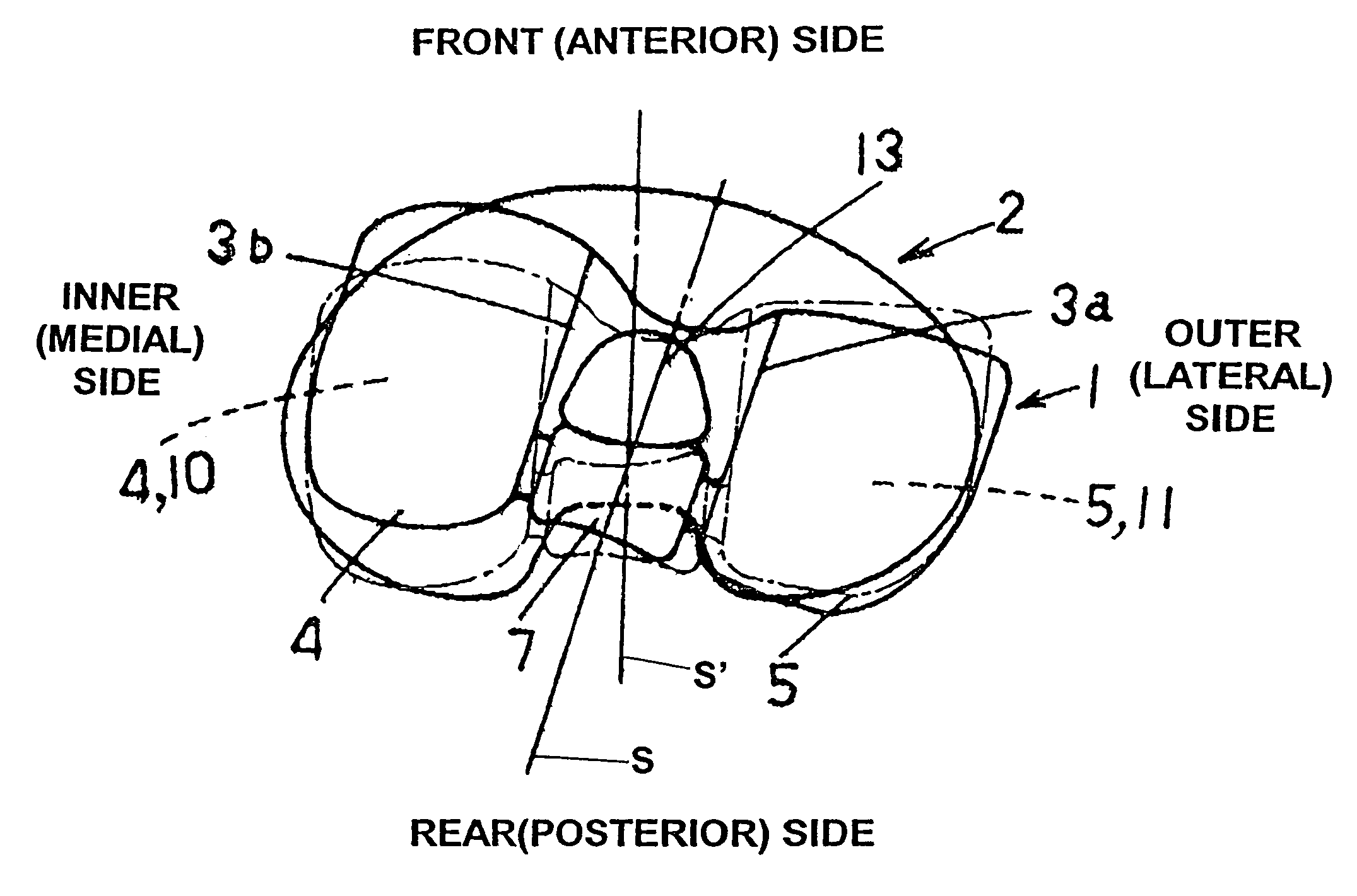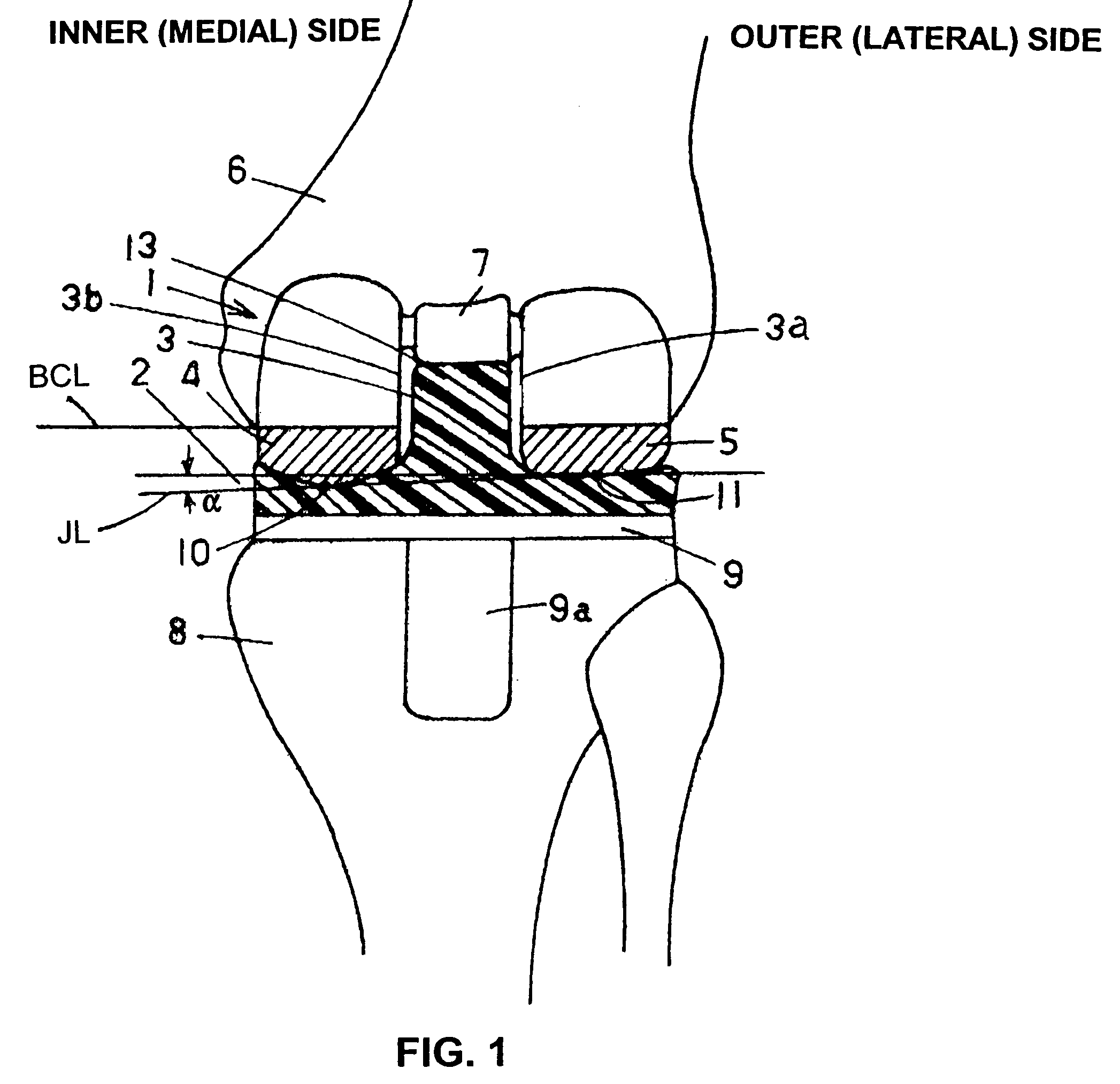Artificial knee joint
a knee joint and artificial knee technology, applied in knee joints, prostheses, medical science, etc., can solve the problems of inability to forget the rotation problem of the artificial knee, slipping easily, and often destroying the function of the ligament, so as to reduce abrasion, prevent slipping, and facilitate rotation
- Summary
- Abstract
- Description
- Claims
- Application Information
AI Technical Summary
Benefits of technology
Problems solved by technology
Method used
Image
Examples
Embodiment Construction
[0025]The present invention will be described below in detail with reference to the preferred embodiments while referring to the drawings. FIG. 1 is a side view of an attached artificial knee joint in standing position as an example of the present invention. FIG. 2 is a cross section of a rear view of the same.
[0026]The artificial knee joint of the present invention is a combination of femoral component 1 and tibial component 2. The femoral component 1 is made from titanium alloy or another biocompatible metal; and it has inlet-shaped intercondylar groove 3 extending from the posterior end to near the anterior end disposed in the center and medial condyle 4 and lateral condyle 5 formed to substantially the shape of the letter C by the side view. The femoral component 1 is attached to the distal end of femur 6. The outline of medial condyle 4 and lateral condyle 5 is convex from the front to the back, and this convex shape is longitudinally contiguous in a stripe.
[0027]It should be n...
PUM
 Login to View More
Login to View More Abstract
Description
Claims
Application Information
 Login to View More
Login to View More - R&D
- Intellectual Property
- Life Sciences
- Materials
- Tech Scout
- Unparalleled Data Quality
- Higher Quality Content
- 60% Fewer Hallucinations
Browse by: Latest US Patents, China's latest patents, Technical Efficacy Thesaurus, Application Domain, Technology Topic, Popular Technical Reports.
© 2025 PatSnap. All rights reserved.Legal|Privacy policy|Modern Slavery Act Transparency Statement|Sitemap|About US| Contact US: help@patsnap.com



